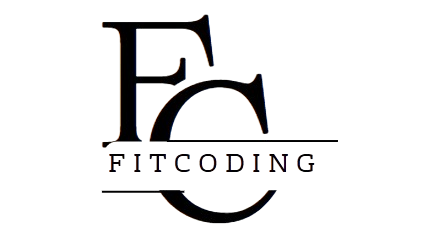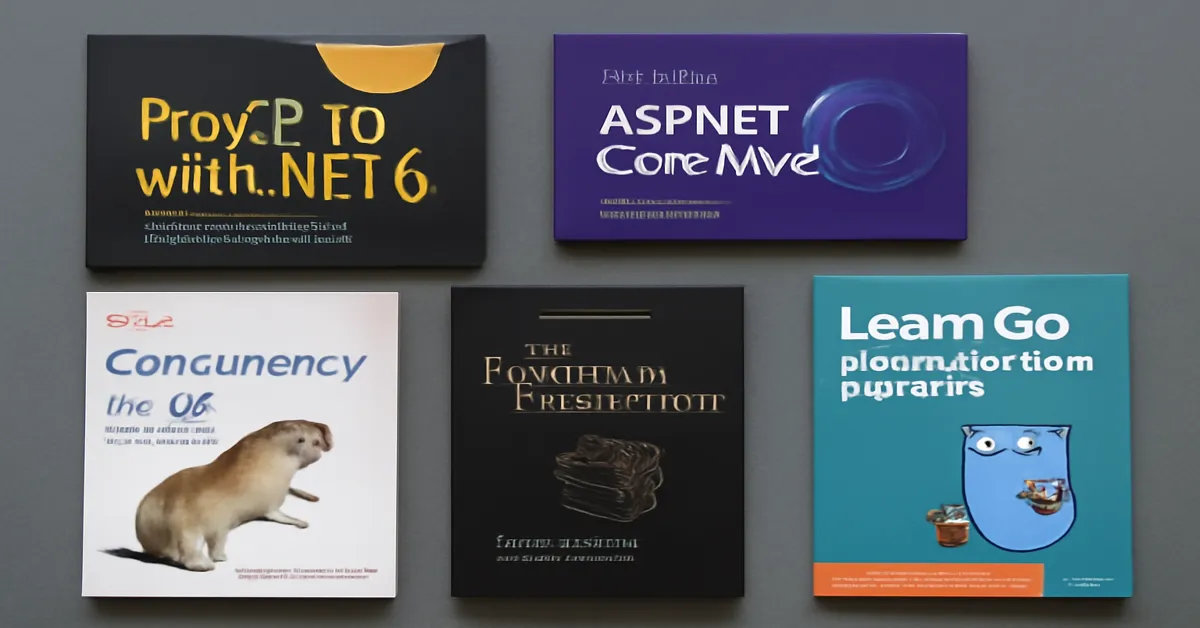In the ever-evolving world of software development, .NET and Golang (Go) stand as two prominent pillars supporting a wide range of applications—enterprise-level systems, microservices, and cloud-native technologies. Whether you’re building sophisticated enterprise software in .NET or working on high-performance, concurrent services in Go, mastering these languages and ecosystems requires not only hands-on practice but also a deep understanding of their principles, features, and capabilities – Master .NET and Golang.
In this article, we will explore a curated list of books that will guide you through the nuances of .NET and Golang, from the basics to the advanced concepts. Each book has been carefully selected to provide developers with solid foundations, expert-level insights, and real-world scenarios that can help you grow your skills in these two powerful programming languages – Master .NET and Golang.
Section 1: Books to Master .NET
1.1 “Pro C# 8 with .NET Core 3” by Andrew Troelsen and Philip Japikse
Overview:
For developers seeking to master C# and .NET Core, Pro C# 8 with .NET Core 3 is an essential read. This book covers both C# 8 and .NET Core 3, making it an ideal resource for learning the fundamentals of .NET development. It provides a thorough understanding of object-oriented programming (OOP), async programming, and advanced C# features. Moreover, it delves into modern web development with ASP.NET Core and Entity Framework Core.
Why it’s a must-read:
This book’s strength lies in its practical examples, covering real-world use cases such as database interactions, building APIs, and utilizing libraries. Whether you’re new to C# or have experience with earlier versions of the language, this book will give you a thorough understanding of C#, .NET Core, and enterprise-grade applications – Master .NET and Golang.
1.2 “ASP.NET Core in Action” by Andrew Lock
Overview:
When it comes to mastering ASP.NET Core, ASP.NET Core in Action by Andrew Lock is a highly recommended book. It guides developers through the process of building web applications, APIs, and microservices using ASP.NET Core. The book emphasizes best practices, performance optimizations, and the intricacies of building scalable applications in a modern web development environment.
Why it’s a must-read:
One of the key aspects of this book is its deep dive into middleware, authentication, authorization, and dependency injection—core concepts for building effective and secure web applications. The author also highlights how ASP.NET Core integrates seamlessly with other Microsoft technologies such as Azure, which is crucial for cloud-native application development.
1.3 “Clean Code: A Handbook of Agile Software Craftsmanship” by Robert C. Martin
Overview:
While this book is not specifically about .NET, it is a must-read for any .NET developer serious about producing high-quality, maintainable code. Clean Code introduces a set of principles for writing clean, understandable, and efficient code. The book emphasizes the importance of refactoring, unit testing, and avoiding bad practices that could degrade the quality of software in the long run.
Why it’s a must-read:
Understanding the principles of clean code will help you not only write better C# code but also understand and apply best practices to any software project, including .NET applications. Test-driven development (TDD) and refactoring are vital components of creating long-lasting, scalable solutions, and this book is indispensable for anyone looking to improve their craft.
1.4 “Entity Framework Core in Action” by Jon P Smith
Overview:
For developers working with Entity Framework Core (EF Core), Jon P. Smith’s Entity Framework Core in Action is a definitive guide. EF Core is an essential tool for .NET developers to interact with databases using an object-oriented approach, and this book covers everything from setting up a basic database connection to building complex, scalable applications.
Why it’s a must-read:
The book provides a deep dive into LINQ (Language Integrated Query), database design, performance optimization, and unit testing with EF Core. It also explores best practices for working with databases in ASP.NET Core applications, helping developers maximize performance and scalability. If you’re building data-driven applications, this book is a key resource.
1.5 “Modern Web Development with ASP.NET Core 3” by Ricardo Peres
Overview:
Modern Web Development with ASP.NET Core 3 is a book tailored for developers who are ready to dive into web development using ASP.NET Core 3. The author covers all aspects of web application development, including architecture, design, performance, and security. This book is particularly useful for developers who want to build robust, scalable web applications in the .NET ecosystem.
Why it’s a must-read:
The book’s real-world examples make it easy to understand how to use ASP.NET Core to build applications. Whether you’re working on single-page applications (SPA) with Blazor or creating RESTful APIs, this book offers a comprehensive roadmap for implementing best practices and solving common web development challenges.
Section 2: Books to Master Golang
2.1 “The Go Programming Language” by Alan A. A. Donovan and Brian W. Kernighan
Overview:
The Go Programming Language is a comprehensive and authoritative resource for learning Go. Written by Brian W. Kernighan, one of the creators of Unix, and Alan A. A. Donovan, this book provides an in-depth understanding of Go’s syntax, data structures, and unique features. It covers both basic and advanced concepts, from working with goroutines to exploring the language’s concurrency model.
Why it’s a must-read:
This book is ideal for developers who are already familiar with other programming languages and want to dive into Go. It provides clear explanations, practical examples, and exercises that will help developers master the language. The focus on concurrency, goroutines, and channels makes it a perfect guide for anyone interested in building high-performance, concurrent applications.
2.2 “Go in Action” by William Kennedy, with Brian Ketelsen and Erik St. Martin
Overview:
Go in Action takes a hands-on approach to teaching Go, with a focus on practical examples and real-world use cases. Written by William Kennedy, a Go expert, and contributors Brian Ketelsen and Erik St. Martin, this book is designed to take developers from beginner to advanced, covering everything from basic syntax to building full-fledged applications.
Why it’s a must-read:
The book’s focus on concurrency, performance, and web development makes it an essential resource for developers working on cloud-native applications, microservices, or any system that requires high concurrency. The practical exercises in Go in Action will help developers learn how to build scalable and efficient services in Go.
2.3 “Go Web Programming” by Sau Sheong Chang
Overview:
For developers looking to dive into web development using Go, Go Web Programming is an invaluable resource. Written by Sau Sheong Chang, the book focuses on building fast and efficient web applications with Go. It covers HTTP, web frameworks, databases, authentication, and much more.
Why it’s a must-read:
This book walks through the entire process of building web applications in Go, including advanced topics like security, API design, and middleware. Developers can leverage this knowledge to build modern web apps that scale effectively.
2.4 “Go Design Patterns” by Mihalis Tsoukalos
Overview:
Design patterns are essential in organizing and structuring software efficiently. Go Design Patterns by Mihalis Tsoukalos is an excellent resource for learning about Go‘s design patterns. The book covers fundamental patterns like Singleton, Factory, and Observer, as well as more complex patterns suited to Go’s concurrency model.
Why it’s a must-read:
By reading this book, developers will be able to apply classic design patterns effectively within the Go programming paradigm. It helps create more maintainable, reusable, and scalable code by following time-tested principles while leveraging the unique strengths of Go.
2.5 “Concurrency in Go” by Katherine Cox-Buday
Overview:
Concurrency is one of Go‘s most powerful features, and Concurrency in Go by Katherine Cox-Buday is the definitive guide to understanding and mastering it. This book covers everything from the fundamentals of goroutines and channels to advanced concurrency patterns used in high-performance applications.
Why it’s a must-read:
Concurrency in Go is central to building fast, scalable applications, particularly when working with distributed systems and microservices. This book explains concurrency concepts clearly and provides practical guidance on designing concurrent systems with Go. It’s an essential resource for anyone building cloud-native applications or systems that require high-performance concurrency.
Section 3: How These Books Empower Your Development Journey
The books outlined above provide comprehensive, expert-level guidance on mastering both .NET and Go. Whether you are new to these languages or looking to deepen your knowledge, these resources will help you – Master .NET and Golang:
- Master Language Fundamentals: Books like The Go Programming Language and Pro C# 8 with .NET Core 3 provide an in-depth understanding of the syntax, data structures, and advanced features of both Go and C#.
- Build Real-World Applications: Books like Go Web Programming and ASP.NET Core in Action show you how to apply your knowledge to build scalable, efficient web applications and services.
- Leverage Modern Patterns: With resources like Go Design Patterns and Entity Framework Core in Action, you can learn how to apply design patterns and best practices to write clean, maintainable code.
- Deepen Your Concurrency Knowledge: For both Go and .NET, books like Concurrency in Go and Modern Web Development with ASP.NET Core 3 dive deep into handling concurrency and building applications that are optimized for performance.
Conclusion: The Path to Mastery in .NET and Golang
Master .NET and Golang is no small feat. However, with the right resources, persistence, and a commitment to continuous learning, you can excel in both ecosystems. The books listed in this article serve as invaluable tools for any developer looking to build high-quality software, whether for enterprise applications in .NET or cloud-native microservices in Go. By immersing yourself in these texts, you will gain the knowledge needed to navigate the complexities of modern software development, ensuring that your projects are scalable, maintainable, and high-performing – Master .NET and Golang.
Read:
Understanding .NET and Golang Modules: A Comprehensive Guide
The 30 Most Asked Interview Questions in .NET and Golang: A Developer’s Guide
The History of .NET and Golang: Parallel Journeys in Software Evolution
Deep Inside of the .NET and Golang Platforms: A Technical Exploration
FAQs
1. What are the best books to learn C# and .NET Core?
Answer: Pro C# 8 with .NET Core 3 by Andrew Troelsen and Philip Japikse, and ASP.NET Core in Action by Andrew Lock are excellent resources for mastering C# and .NET Core, covering both fundamental and advanced topics.
2. How can I learn concurrency in Go?
Answer: Concurrency in Go by Katherine Cox-Buday is the best resource for mastering concurrency in Go. It covers goroutines, channels, and advanced concurrency patterns that are essential for building high-performance, concurrent applications.
3. Are there any books to help me design patterns in Go?
Answer: Yes, Go Design Patterns by Mihalis Tsoukalos is an excellent resource for understanding and applying design patterns in Go, particularly in the context of Go’s unique concurrency model.
4. What is the best book for learning ASP.NET Core web development?
Answer: Modern Web Development with ASP.NET Core 3 by Ricardo Peres is a great book that teaches the ins and outs of building modern web applications using ASP.NET Core, covering topics like API development, security, and performance optimization.
5. Can I learn both .NET and Go from books effectively?
Answer: Absolutely! Books like The Go Programming Language by Alan A. A. Donovan and Pro C# 8 with .NET Core 3 by Andrew Troelsen provide comprehensive coverage of both languages. Combining resources for both ecosystems will give you a well-rounded understanding of modern software development practices.











